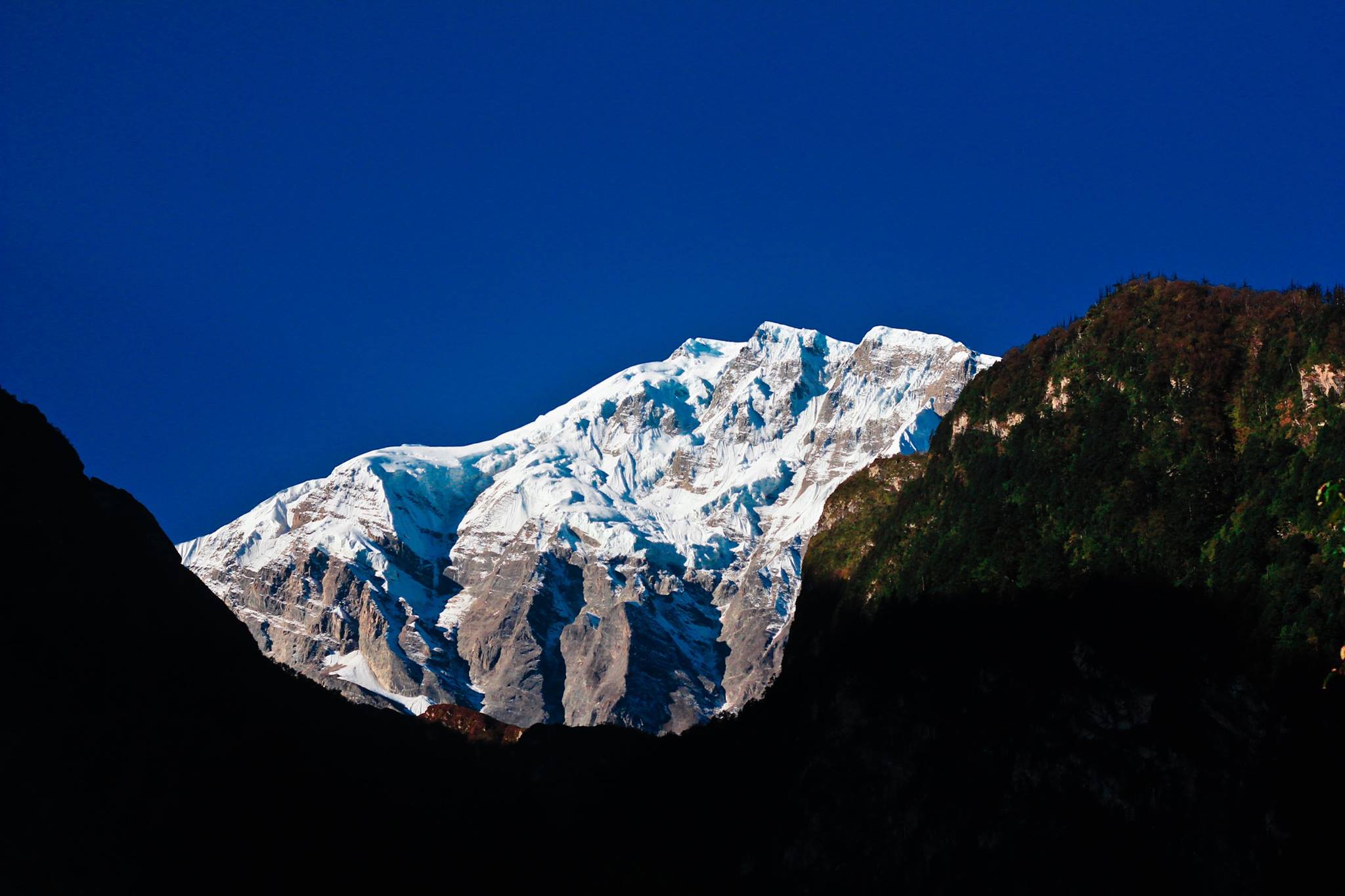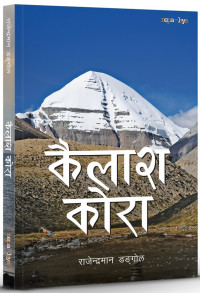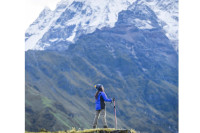Travel
How to travel from Manang to Mustang in five days—and not die along the way
At times, it may feel like it’s your last day on earth. But you’ll live.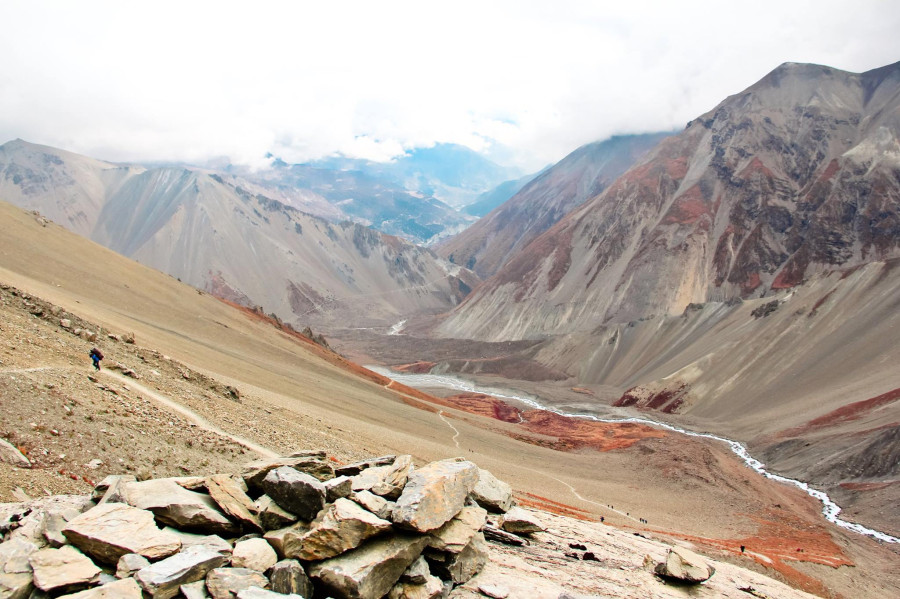
Pranaya SJB Rana
DAY 1
It is evening when you reach Besisahar from Pokhara. You intend to stay overnight but immediately climb aboard a Bolero when the opportunity presents itself. The driver is a young man, lean. The jeep comes with two conductors, barely teenagers, who hang off the sides because there are already five of you and you don’t all fit inside the cramped back seat.
An hour or so into the drive, it’s already dark and your friends, who’ve managed to grab the coveted seats near the windows, say it’s better that way. At night, you can’t see the road, and if you can’t see the road, you can’t see the drop. The driver hunches over the wheel, concentrating, and you are thankful for the Bolero’s high beams that cut through the dark like a knife. The road is narrow and the drop is deep.
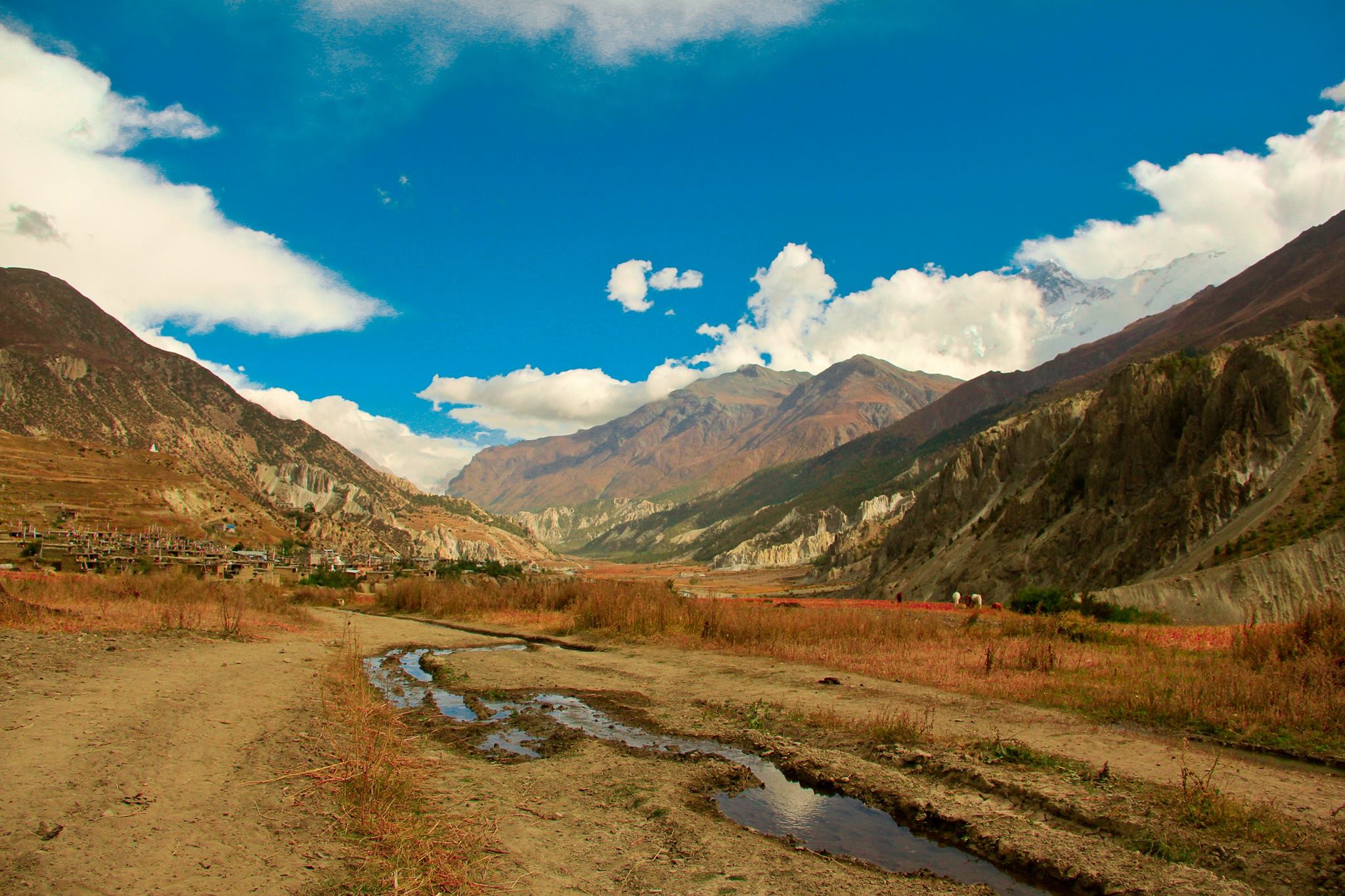
You pass through a hydropower tunnel and signs are in Chinese. There are ghostly settlements by the wayside, populated by sulky Chinese drinking glasses of unidentifiable liquid. You stop at one of these eateries for dinner, where you eat dal-bhat that is not particularly good. But you are hungry from the travelling and you eat at least two platefuls. Off to the side, the driver downs a tall glass of pale nigar, and you begin to wonder if you’ll make it through the night. It is not the last time on this trip that you will think that.
Surprisingly, the driver is steadier with the drink in him. You get to Dharapani without incident, but are stopped at a police checkpoint. No passage until 4am, says the driver. It is past midnight and you manage to catch some uncomfortable shut-eye. At a little past 4, you nudge the driver awake and he drives you to Chame. As the sun begins to rise, the mountains appear from out of the black like ink blots on a piece of paper. Silhouetted against an ethereal blue sky, they are large, close and forbidding.
At Chame, you bid the driver goodbye and check in to the nearest hotel. You sleep for a few hours and wake before noon for a late breakfast. The landlady is friendly and you manage a cup of lemon tea and some fresh bread. It is enough to keep you going.
DAY 2
It is quite a way to the village of Manang, the next stop on your itinerary. You don’t have much time so when a pick-up truck passes by, you ply on its back. The driver charges you a few hundred per person and you sit on the back of the truck, bumping along. You wear a hat but somehow your bald scalp is sunburned nonetheless. Along the way, there are massive stony hills, tall and wide, riven with cracks that undulate like waves. You get to Manang in record time.
At Manang, you drink more tea and walk around the picturesque town. The cobblestone paths and low roof homes are characteristic of this region. The paths wind around houses and donkeys. Prayer flags flutter in the window. In the distance, an impossibly large mountain appears to be melting, but it is only a slow-moving glacier.

You don’t want to admit it, but you are not feeling too good. You’ve climbed more than a thousand metres in little over a day and you are afraid you are coming down with something. You feel pukish, but you know you have a long walk ahead of you so you steel yourself and swallow down the bile.
The walk to Khangsar is not particularly arduous but there are times when you are in excruciating pain from the steep climb. Then, at other times, the path gently slopes upwards, easy and relaxing. You see people and pack animals in the distance. You look behind you and see a wide expanse of almost near-desert with rolling hills and dagger-like mountains. Besides your friends, you are alone most of the time and you concentrate on putting one foot in front of the other. It is meditative and therapeutic. You think of nothing.
At Khangsar, you choose one lodge from among many. The owner is a woman who says she is 40 but looks 60. At dinner, she makes hot rotis that she flips onto your plate as you eat. She tells a long winding story about Maoists in Chitwan and how she saved an old woman from being brutalised. You pay attention because it is amusing but ultimately, you don’t believe her. Not completely.
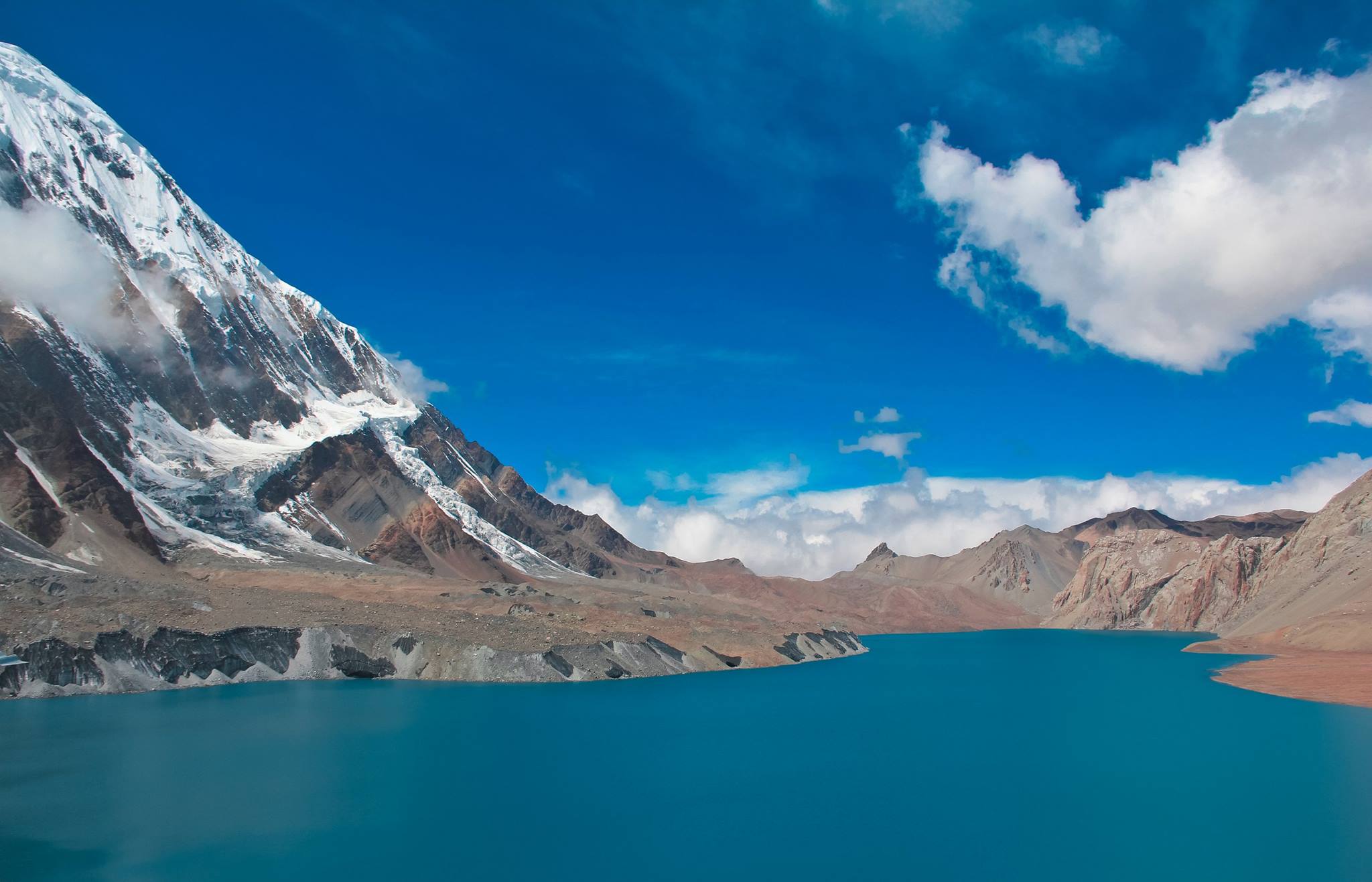
DAY 3
The next day, you set out bright and early for Tilicho Base Camp. You plan to make it to Base Camp by lunch, then head to Tilicho, where you can spend the night. The walk to Tilicho Base Camp is unlike anything you have ever encountered. The hills are arid and the path is one person wide, cut into the hillside which is shorn of any vegetation. Above you are hills and below you is a river, tiny and ribbon-like, far down below. One misstep and you risk tumbling all the way down, with nothing to hold on to. You are afraid every step of the way.
You walk gingerly, taking care to step carefully. But the path is made of pebbles and loose mud, which skitter underneath your Goldstar shoes like scared little insects. You nearly slip and fall at least a dozen times. But you manage to collect yourself. Half-way to Base Camp, you see a pair of cyclists, foreigners, madmen, jumping the treacherous path as if they were in a skatepark. They seem to have no fear and they speed, brake, slip and slide. They appear to have a deathwish.
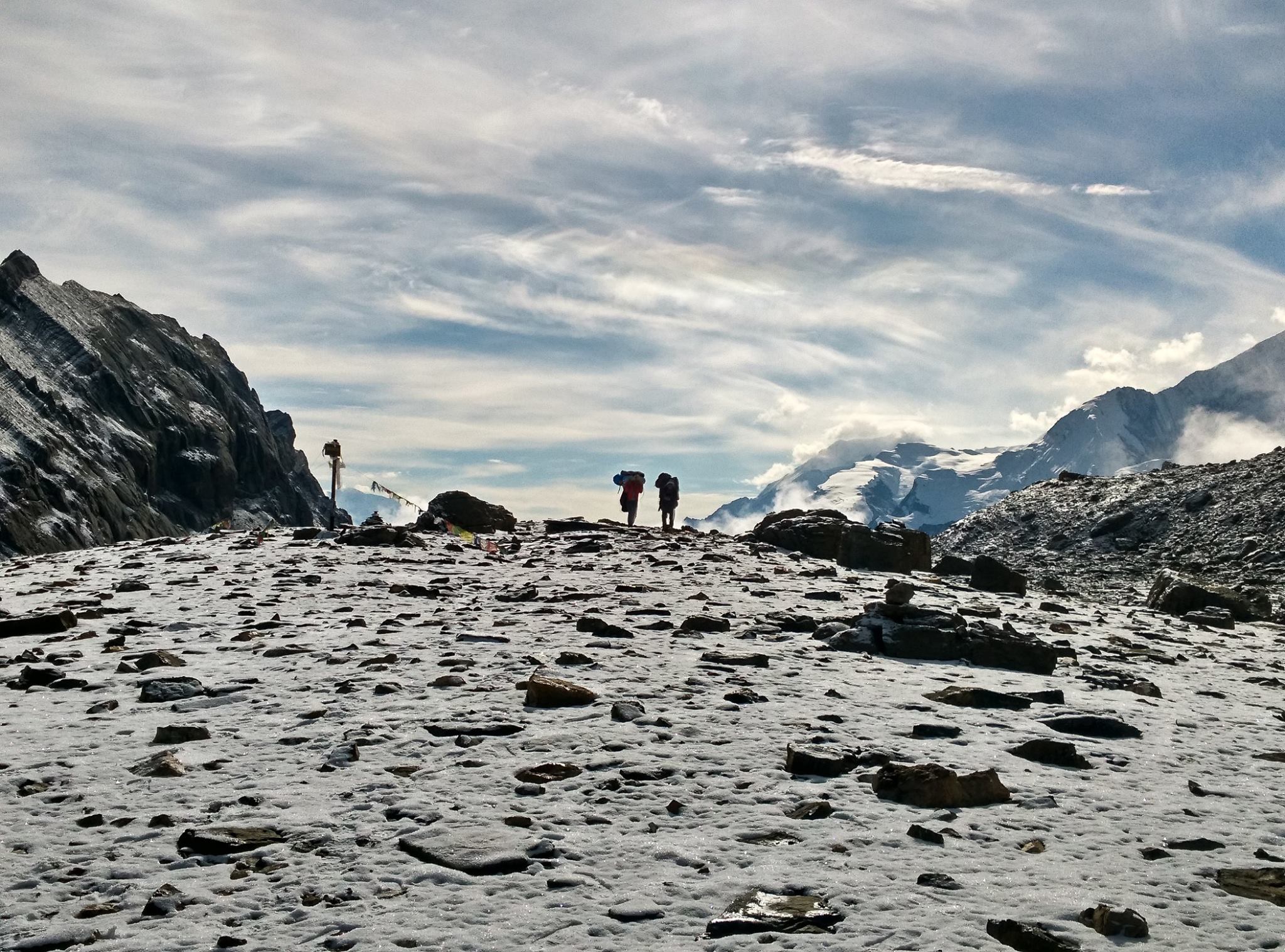
You are almost at Base Camp when you start to feel dizzy. You stomach is bloated and your head feels heavy. You’ve run out of water so you fill your bottle with water that is ice-cold and cascading from the rocks. You drink long and deep, hoping the water will clear your head. You are deeply mistaken. The cold water makes your headache worse and you can barely walk anymore.
You stumble into Base Camp behind your friends and lay down outside the only big lodge there. You vomit copious amounts of water and the lodge owner warns you and your friends that you have altitude sickness. If you don’t descend right away, there is a very real possibility that you will die, he says. But you are no weakling, and you don’t know how you would descend.
Your Tilicho plans are put off until the next day. Your friends are worried, but not so much. They aren’t the concerned type. You decide to sleep it off and see what happens in the morning. The lodge owner warns against it. You could easily die in your sleep, he says. You are worried too, but also too tired to care. If death comes, then so be it, you decide.
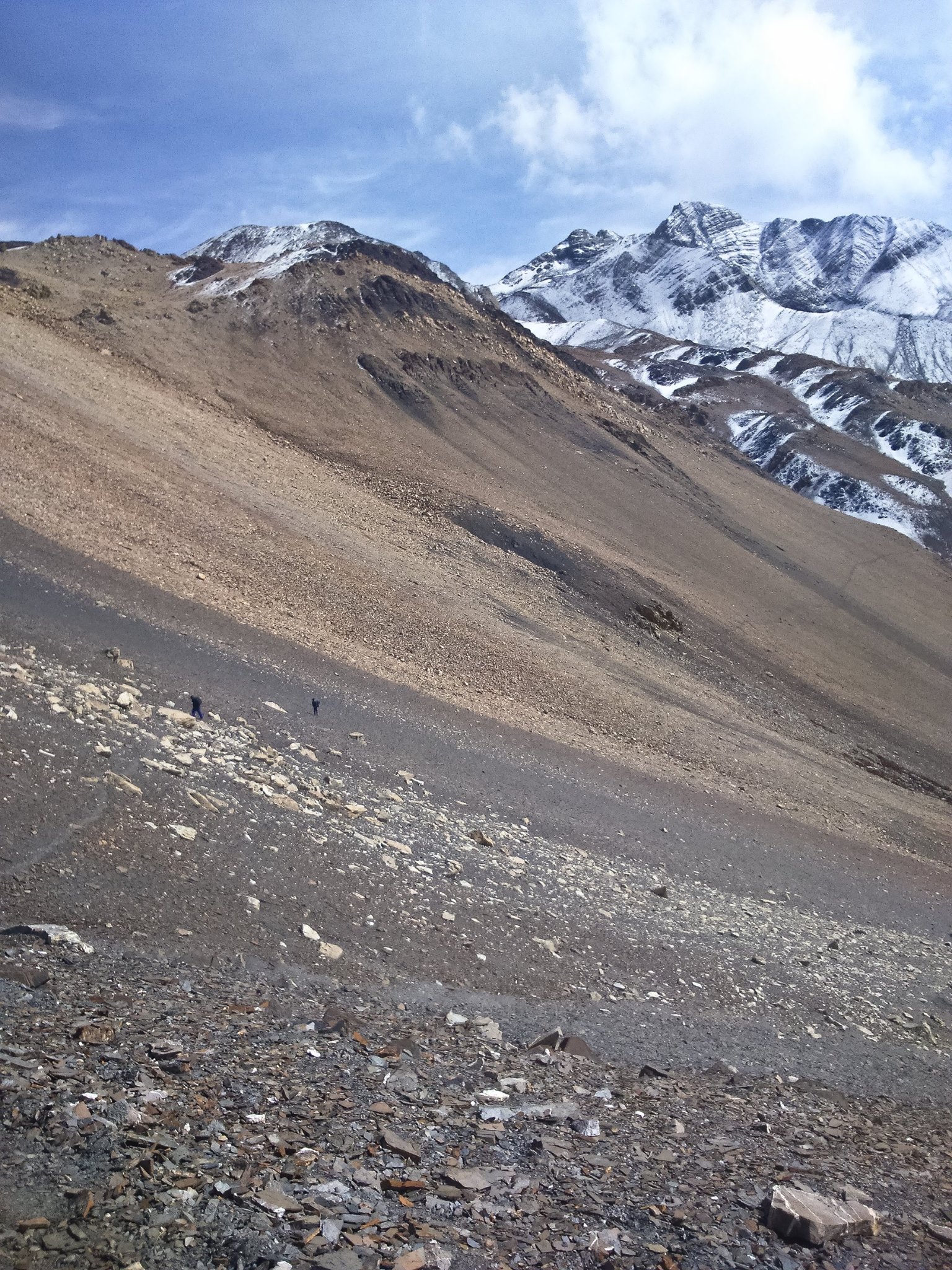
DAY 4
You wake in the morning refreshed, with an energy that you didn’t know you still had in you. You haven’t eaten since the day before and yet, you don’t feel hungry. You refuse offers of breakfast and follow your friends as they make their way to Tilicho lake. You walk with a spring in your step, all trace of the altitude sickness gone. Your head is light and airy, you look forward to the lake.
You cannot believe how blue the lake is. It is an unthinkable blue, a colour you can’t imagine because you’ve never seen it before. It takes you a full minute to appreciate how something could be so cerulean. Tilicho is nestled in the lap of massive craggy mountains and you can hear glaciers breaking in the distance. They explode like dynamite, reverberating through the air. It is a majestic sight and you feel glad you didn’t die the night before.

You spend the day at Tilicho. While most visitors take a side-trip to Tilicho on their way to the Thorong-la, you have a different plan in mind. And you need an entire day to bring it to fruition. So you walk down to the lake and touch its waters. Ice cold, as if sticking your hand inside a freezer. You take pictures, you lounge by the shores, you watch the mountains. When it gets darker, you go up to the only teahouse at Tilicho where two young men have agreed to let you stay the night. They cook lumpy rice and a tarkari of potatoes and cabbage. You eat but barely.
When you sleep, something strange happens. You wake intermittently in the night, your breath caught in your throat. You twist and turn, unable to sleep deeply. Later, back in Kathmandu, you’ll Google what happens to sleep at high altitudes. When you sleep, your lungs take in less oxygen, because of the thin air. And your body, always looking out for you, assumes it is dying, and wakes you up. You find that horrifying but also oddly comforting.
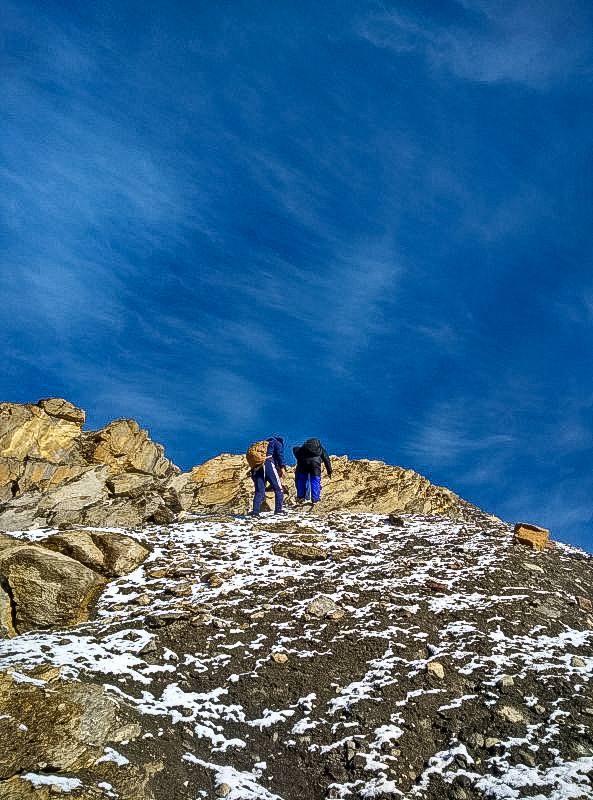
DAY 5
You leave at 5 in the morning, making your way towards the opposite direction, aiming for a pass high in the mountains. There is a small stream that you have to cross. You leap across it but you are too short and your foot goes into the river. It is extremely cold and now you are walking with a soggy shoe and a soggy sock.
You pass a group of tourists who are going the same way. They say they will take at least another two days to do the route you are doing. The guides look at you as if you are insane when you tell them you plan to finish by nightfall.
You climb up the mountain. There is a lot of snow and you are high up, surrounded by peaks on all sides. Far below in the distance, you can see Tilicho, shining like a jewel. After hours of trudging through ankle-deep snow in your Goldstar shoes, you eventually reach Mesokanto pass, at 5,200 metres. You are not altitude sick anymore, but when you look at where you are going next, you nearly collapse.
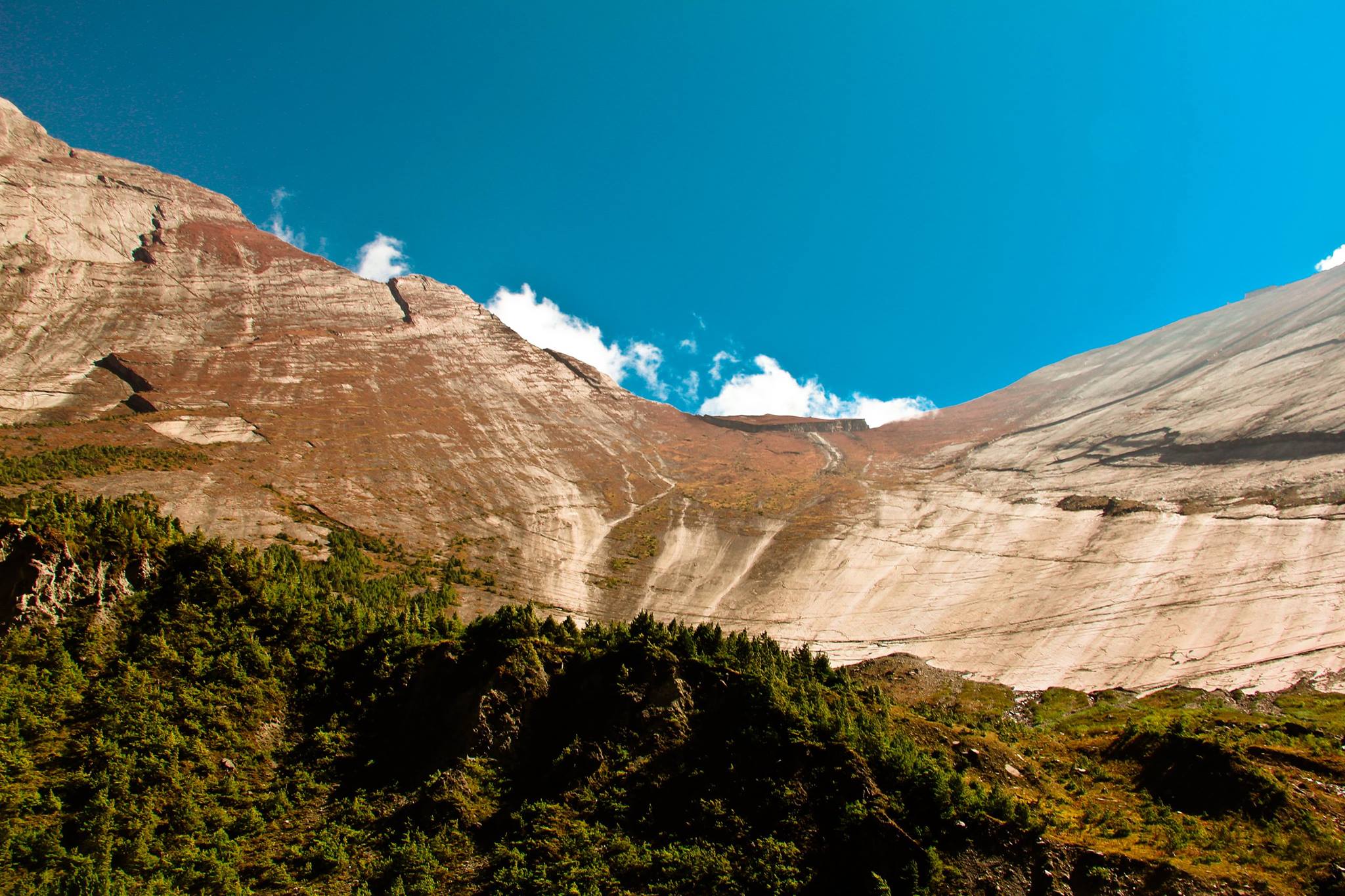
Mesokanto pass is barely a few metres wide, enough for a few people to sit and eat a Snickers bar or two. You munch on one while contemplating just how you will make the rest of the journey. There is a sign that says ‘Jomsom’ but it points straight down a near-vertical slope that is full of pebbles and small sharp rocks. There is no path. You don’t have any pictures from here on, because you are trying very hard not to die.
From Mesokanto, Mustang begins and you can see a large wide valley. There are no houses, no structures, no buildings. It is completely empty, except for nature. And you realise you will have to traverse all that distance, because there is nowhere to rest and you have no tent or sleeping bag.
The following hours are long and hard. You slip and slide and tumble. You cut your leg, but you soldier on. Eventually, the slope gives way to more manageable terrain. You drink water from waterfalls and you talk of all the food you will eat when you are in Jomsom. You eventually lose track of the hours you’ve been walking. There is nothing to do but put one foot in front of the other and marvel at the silence around you. The air is fresher than you’ve tasted and all around you, there is no one but you and your friends. You realise then how beautiful it is to be so far from the madding crowd.
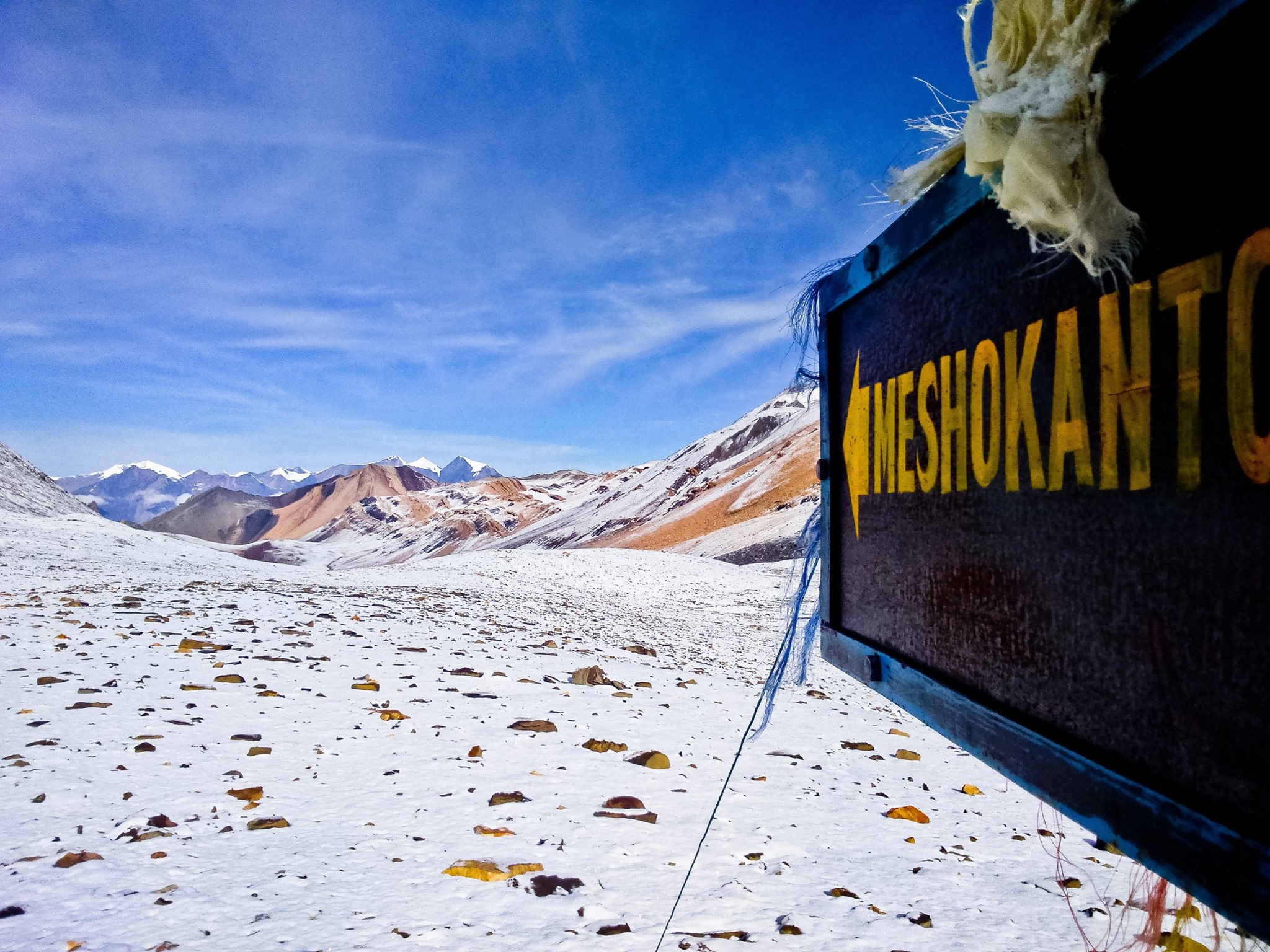
When you reach Jomsom, it is 9pm. You have been walking for 16 hours. All you’ve eaten is a Snickers bar, or was it a Mars bar. You don’t remember and it doesn’t even matter anymore.
You check into a hotel, take a long hot shower and gobble down some momos and some soup. You sleep better than you ever have in your life.
The next day, you take a bus down to Beni. The bus is piloted by a drug addict and there are numerous adventures you have on the way. But that is a tale for another time, and another page.




 7.12°C Kathmandu
7.12°C Kathmandu
